For the 2025 school year, there is 1 public charter school serving 122 students in Dixie School District.
Public Charter Schools in Dixie School District have a diversity score of 0.48, which is less than the Florida public charter school average of 0.67.
Minority enrollment is 33% of the student body (majority Black), which is less than the Florida public charter school average of 72% (majority Hispanic).
Overview
This School District
This State (FL)
# Schools
8 Schools
758 Schools
# Students
2,069 Students
398,152 Students
# Teachers
116 Teachers
17,602 Teachers
Student : Teacher Ratio
18:1
18:1
District Rank
Dixie School District, which is ranked within the bottom 50% of all 73 school districts in Florida (based off of combined math and reading proficiency testing data) for the 2021-2022 school year.
The school district's graduation rate of 80-84% has decreased from 85-89% over five school years.
Overall District Rank
#39 out of 73 school districts
(Bottom 50%)
(Bottom 50%)
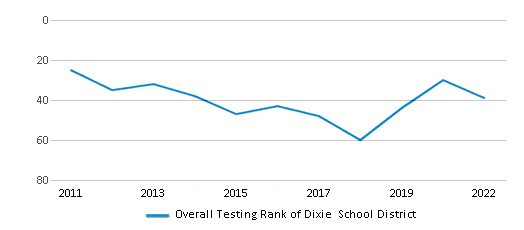
Math Test Scores (% Proficient)
54%
52%
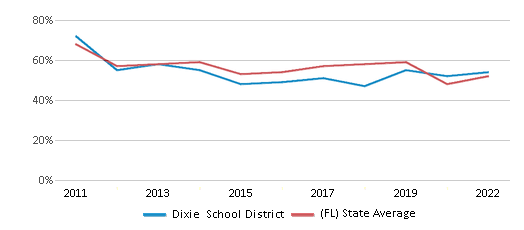
Reading/Language Arts Test Scores (% Proficient)
47%
52%
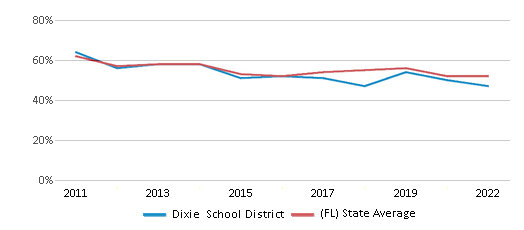
Science Test Scores (% Proficient)
50%
52%
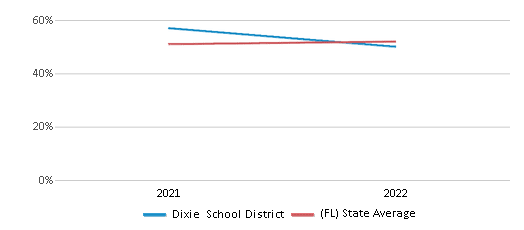
Graduation Rate
80-84%
87%

Students by Ethnicity:
Diversity Score
0.32
0.67
# American Indian Students
7 Students
1,018 Students
% American Indian Students
1%
n/a
# Asian Students
6 Students
11,806 Students
% Asian Students
n/a
3%
# Hispanic Students
104 Students
184,788 Students
% Hispanic Students
5%
47%
# Black Students
165 Students
73,182 Students
% Black Students
8%
18%
# White Students
1,697 Students
113,159 Students
% White Students
82%
29%
# Hawaiian Students
5 Students
730 Students
% Hawaiian Students
n/a
n/a
# Two or more races Students
85 Students
13,469 Students
% of Two or more races Students
4%
3%
Students by Grade:
# Students in PK Grade:
162
1,935
# Students in K Grade:
170
33,180
# Students in 1st Grade:
163
33,802
# Students in 2nd Grade:
151
33,792
# Students in 3rd Grade:
158
33,836
# Students in 4th Grade:
157
32,634
# Students in 5th Grade:
151
31,149
# Students in 6th Grade:
148
38,407
# Students in 7th Grade:
137
38,336
# Students in 8th Grade:
143
35,557
# Students in 9th Grade:
149
21,185
# Students in 10th Grade:
147
20,972
# Students in 11th Grade:
123
19,947
# Students in 12th Grade:
110
23,420
# Ungraded Students:
-
-
District Revenue and Spending
The revenue/student of $12,203 is higher than the state median of $11,962. The school district revenue/student has stayed relatively flat over four school years.
The school district's spending/student of $12,104 is higher than the state median of $11,615. The school district spending/student has stayed relatively flat over four school years.
Total Revenue
$25 MM
$34,349 MM

Spending
$25 MM
$33,354 MM
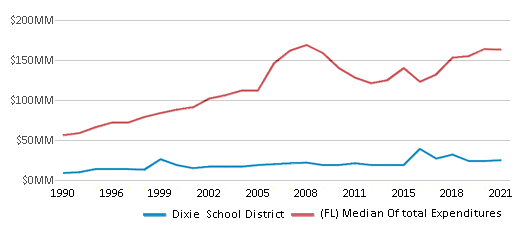
Revenue / Student
$12,203
$11,962
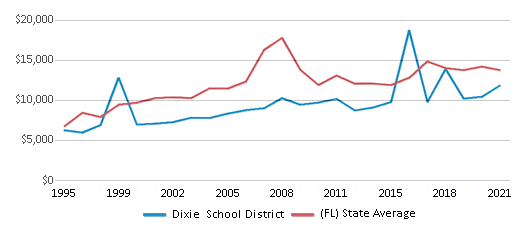
Spending / Student
$12,104
$11,615
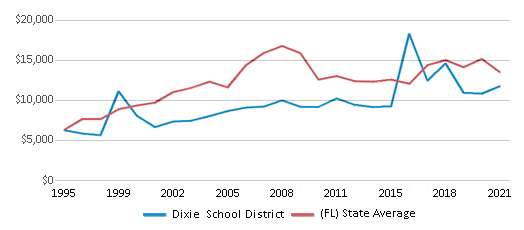
Best Dixie School District Public Charter Schools (2025)
School
(Math and Reading Proficiency)
(Math and Reading Proficiency)
Location
Grades
Students
Rank: n/an/a
Kinder Cub School Inc
Charter School
149 Ne 221st Ave
Cross City, FL 32628
(352) 498-0002
Cross City, FL 32628
(352) 498-0002
Grades: PK-2
| 122 students
Recent Articles

Sexual Harassment at Age 6: The Tale of a First Grade Suspension
A six-year old in Aurora, Colorado, was suspended after singing an LMFAO song to a little girl in his class and reportedly “shaking his booty.” We look at the case and the sexual harassment problem in public schools today.

How Scaffolding Could Change the Way Your Child Learns
This article explores the concept of instructional scaffolding, a teaching method that enhances learning by breaking down complex tasks into manageable parts. It highlights how scaffolding supports students in developing critical thinking skills and becoming more independent learners. The article discusses the benefits of scaffolding, including improved engagement and reduced anxiety, and provides strategies for its implementation across various educational levels.

February 05, 2025
Understanding the U.S. Department of Education: Structure, Impact, and EvolutionWe explore how the Department of Education shapes American education, from its cabinet-level leadership to its impact on millions of students, written for general audiences seeking clarity on this vital institution.





